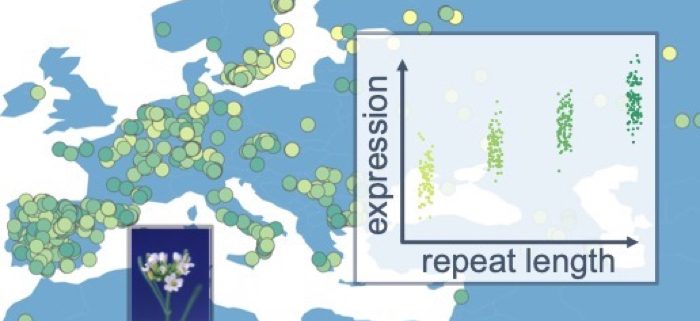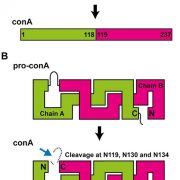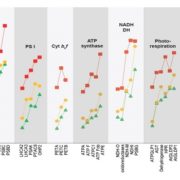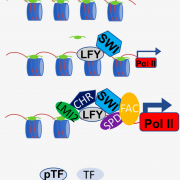Repeat yourself: A new way to self-express
Reinar et al. uncover the effects of allelic variation in short tandem repeats across natural populations of Arabidopsis thaliana on gene expression.
By Kjetill Jakobsen1, Melinka Butenko2, and William Reinar1
1Centre for Ecological and Evolutionary Synthesis (CEES), University of Oslo, Department of Biosciences, 0316 Oslo, Norway
2Section for Genetics and Evolutionary Biology, Department of Biosciences, University of Oslo, 0316 Oslo, Norway
Background: Plants such as natural populations of Arabidopsis thaliana have adapted to different and changing seasonality and climates. A key adaptive genetic mechanism is to regulate genes—gene expression needs to be tuned in response to the external environment. We know that this is a highly controlled process involving the chromatin structure and promoter binding proteins. At the same time, a puzzling but common feature of genes is the presence of short stretches of repeated DNA (short tandem repeats) near or within the gene sequence. Recent research has shown that mutations in these sites, leading to variation of the repeat length, might affect gene transcription and thus provide a regulatory mechanism for efficient adaptation. The importance of repeat length variation in the regulation of gene expression in natural plant populations is not clear.
Question: We investigated if naturally occurring length variations in short tandem repeats correlate with gene expression differences in wild accessions of Arabidopsis thaliana. To answer this question, we analyzed whole genomes and gene expression data from a wide selection of wild samples.
Findings: Our analysis of repeats in the Arabidopsis thaliana genome revealed that repetitive sites cluster near genes involved in development, stress responses, and plant hormone pathways. Our statistical analysis demonstrated that the closer a repeat is to a gene, the more likely it is to influence gene expression. A surprising finding was that repetitive sites in protein-coding sequences, which encode repeated amino acids, also affect gene expression. For one protein, we experimentally verified that variation in the repeat altered the binding with its own promoter in Nicotiana benthamiana leaf cells and changed its gene expression—and the effect mirrored the signal in the population data.
Next steps: A natural next step is to test if repeat-associated differences in gene transcription lead to increased adaptation under specific conditions. Genetic modification of samples that only differ in a specific repeat and grown under different environmental conditions could reveal if phenotypic adaptability is affected in a controlled setting.
William B. Reinar, Vilde Olsson Lalun, Trond Reitan, Kjetill S. Jakobsen, and Melinka A. Butenko (2021). Length variation in short tandem repeats affects gene expression in natural populations of Arabidopsis thaliana. Plant Cell. https://doi.org/10.1093/plcell/koab107










